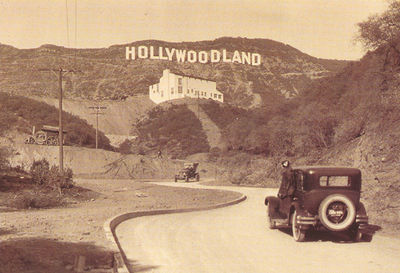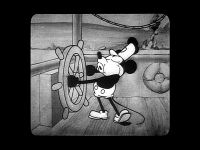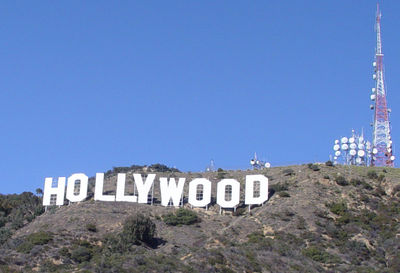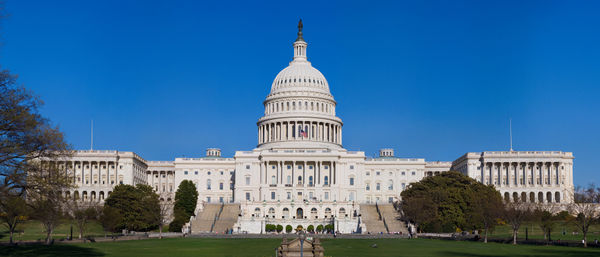2.1 Copyright and Mass Media
So far, the historical development of free and open source software and the ideas that lie behind it were summarized. These philosophies and production mechanisms were later applied in many domains of information production other than software, and the rest of this text shows how this culture of sharing rather than hoarding information could be of benefit to all of us.
The Origin of Copyright

Before the invention of the printing press by Johannes Gutenberg in 1445 it was very laborious to copy books. It was mostly done by monks who simply copied them by hand. But thanks to Gutenberg, suddenly relatively cheap reproduction of text in big quantities was possible, which gradually weakened the information monopoly of the catholic church. Martin Luther was able to spread his disputations and the bible text in dialect instead of latin and started the protestant reformation. With the advance of the printing press and broader literacy, there also emerged the possibility to earn some money through writing books for the first time. Particularly in northern Europe early capitalistic enterprises started selling book copies, usually while giving the authors a fair share. But soon competing publishers reprinted those texts without compensating the original authors. The first actual copyright law is considered to be the british Statute of Anne of 1710 which was intended to protect authors and their publishers from foreign book printers. It granted the copyright holders the exclusive right to print their books, however only for a limited term. Copyright expired fourteen years after a book was published: the text passed in the so-called public domain and was free for everybody to reprint. The british parliament chose to limit the duration of the monopoly on printing it granted to the originator in order to ensure that this monopoly wasn't exploited. Critical information or controversial texts couldn't forever be prevented from circulating in this way, but the market on which cultural works were sold was free. Additionally, when printers chose to register a book for copyright, they had to provide copies to nine british libraries.
As time passed and new technologies were invented, copyright law was automatically adapted to include not only books and maps, but successively also paintings, photographs, sound recordings, films, and so on. The Berne Convention of 1886 represents the first agreement of multiple sovereign states to recognize each others copyrights. At that time, under the pressure of publishers and content-holders, as they were to be called, copyright had already mutated to extend its terms to 50 years after the death of the author and the signing nations were prohibited from requiring registration: as soon as someone writes something on a sticky, it is automatically covered by copyright. Additionally not only the actual work was covered now, but it was also forbidden to create derivative works, that are works which include major aspects of a previously created, copyrighted work, like for example translation or the adaption of a story to another form (e.g. create a film or a children's book based on a novel).

Early 'Pirates'
It hasn't always been the same folks who have profited from exclusive rights like copyright and patents. In the infancy of cinema, Thomas Edison owned some important patents on the movie-making process and he was keen on enforcing them. Filmmakers that used his techniques without his permission were heavily hindered, but this impediment was overturned easily as independent filmmakers simply fled to the West Coast of America. California was then remote enough to escape the law and by the time enough marshals were present, Edison's patents had already expired, as at that time they were granted for only seventeen years. This is how a new creative industry was born: Hollywood.

In 1928, Walt Disney released the short film Steamboat Willie. It was the first sound cartoon to attract widespread attention and it made the Mickey Mouse character famous. Disney had successfully adapted this technique to cartoons, while the first feature-length motion picture with synchronized sound (The Jazz Singer) had been released only one year earlier. Also the plot was not entirely original but rather a parody of the feature-length silent film Steamboat Bill Jr., which was released earlier in the same year. This movie in turn was inspired by a song named Steamboat Bill, and in both Steamboat Bill Jr. and Disney's Steamboat Willie the song is used. This borrowing and the forth and back of ideas and stories brought us Mickey Mouse and a whole lot more of what we consider to be part of our culture today. These practices were nothing uncommon then, and so nobody stopped Walt Disney from taking the grim fairy tales of the Brothers Grimm and turning them into the wonderfully animated children's films that we all have come to love. This was still possible in a time where the average term of copyright was about thirty years and the majority of creative work wasn't even copyrighted as a rich public domain existed.[1] Past culture was free to build and innovate upon.
Mass Media
Since then however, copyright law has become stricter and stricter. The innovators from then have become an industry. The technologies of the 20th century and their application led to the advent of the mass media: television, radio, music recordings, cinema, newspapers, books and magazines that are meant to reach a very large audience and because they are very expensive to operate, they promote a one-to-many broadcast model. Not everybody can have his own television network. The major source of income for the mass media, if they are not heavily state-financed, is advertisement. As the mass media follow the economics of industrial production (i.e. producing large amounts of the same good) they have increasingly come to adapt the principle of the lowest common denominator: they produce content which keeps an audience as large as possible watching and consuming. The audience doesn't necessarily have to be excited, but they have to be kept in front of the screen in order to watch the advertisement. To minimize the risk of broadcasting material that doesn't attract a large audience, new content is produced based on concepts which are known to work while innovation and radically new approaches are seldom allowed.

The same industrial economies have also led to an increasing concentration of media ownership. The Big Four record labels (Sony BMG, EMI, Universal and Warner) have a worldwide market share of over 80%. The Big Six film studios (Sony, News Corporation, The Walt Disney Company, Time Warner, Viacom and General Electric) hold a market share of over 90%. Through most of the US television history, The Big Three Television Networks (ABC, NBC and CBS) broadcasted up to 99% of the content watched. Lateron, Fox and The CW gained also a considerable share. Similar structures can be found in the radio business. An example: In 1997, Clear Channel Communications Inc. owned 173 radio stations, in 2004 it were over 1200 stations. Not only do rather few companies hold rather big market shares, but these companies, which control the various mass media, are in turn owned by even fewer media conglomerates. The nine current media conglomerates are Disney, CBS, Time Warner, News Corp, Bertelsmann AG, Viacom, General Electric, Lagardère Group and Vivendi SA. These companies together own more than 90% of the media market. For a visualization of the many mergers and buyouts in the mass media business which have led to the current conglomerates, have a look at this chart.
This concentration of media ownership has significant effects on what gets produced and what information is presented to the public. In this absence of competition, the media conglomerates oblige rather their major advertisers and the government than the general public, to maximize revenue and keep their dominant position. Thus the television studios have a policy to avoid "controversial" ads. Unfortunately, they have decided that all government-sponsored ads are uncontroversial and the ones disagreeing with the positions of the government are controversial. And as the overwhelming part of the mass media are controlled by these few companies, nobody is in a position to let the public know of alternative opinions or promote stories which the major studios would rather like to ignore.
Realities of Copyright
Throughout the 20th century the mass media had a huge influence on the general public. Apart from less known artists or local newspapers, their products were what was available and thus determined what was to be seen and heard. Their products form a major part of our culture today. Of course all these works were covered by copyright. Nobody else was and is permitted to make any use beyond simple consumption of the material without asking them for permission. They can then decide to grant the applicant a license which gives him specified rights, like for example using a scene in a remix clip of several classic motion pictures.
In reality, the first major obstacle is usually to find all the actual copyright holders. Since registration isn't necessary anymore but everything created is automatically covered, no lists exist to look up who holds which copyrights, and often they have been transfered from the original creators to some production company to some other company and so forth. Even if you manage to find all the people involved, in a movie this is every artist from the director to all the actors, stuntmen and musicians, then you still have to contact every single one of them and arrange a deal to get their permission to use the material and pay them royalties. Some of them will be glad to help you, others might refuse to grant you permission or demand a price you are unable to pay. All in all, this is a very, very time-comsuming and expensive process which you are only able to undertake if you are backed-up or employed by a company with rather large resources available.
To ease this problem, a doctrine exists in most countries which provides exceptions to copyright law and permits limited use of copyrighted material without requiring permission from the rights holder for purposes such as criticism, comment, news reporting, teaching (including multiple copies for classroom use), scholarship, or research.[2] In the United States this doctrine is called fair use, in Great Britain and other members of the Commonwealth of Nations fair dealing. However, in practice it is often difficult to determine if an actual use is fair use and it is also considered to depend upon how large a part of the work is used, whether the use is commercial or nonprofit, and the effect of the use on the market value of the copyrighted work. So if you actually decide to use, let's say 30 seconds of the film Gone with the Wind in your documentary, without asking the studio for permission, relying on fair use, it is likely that you get into trouble. The last thing you and your producer want before the scheduled release of your documentary is licensing issues. And as fair use is rather vaguely defined, there exists a big chance that the Hollywood studio will try to squeeze as much money out of your already tight budget as possible, or otherwise take you to court if you try to argue for your fair use rights. Then it comes down to who has better lawyers and deeper pockets, you or the media conglomerate. Because even if you win, you still have to pay your attorney's fees or you could try to countersue them for recovery. Anyway, it would end up in a long and complicated legal battle which is neither easy nor cheap for you to survive.[3] Fair use was meant to qualify copyright and render important parts of our culture open as a base for further creativity and innovation, but the law continues to fail in practice. This law rather shapes who is able to do business and who is not.
Expansion of Copyright

Fortunately, copyright is granted only for a limited period of time and after that the works pass into the public domain. Then, everybody is free to copy and share them with their friends, alter them or create new works based on these old ones, retelling the stories, adapting them to a new time or to a new medium. Obviously, the mass media companies, which hold the copyright for all of their past and recent productions, would rather like to keep their exclusive copyright forever.
The legal base for all U.S. Copyright and also patent law is a clause in the Constitution which allows Congress to promote the Progress of Science and useful Arts, by securing for limited Times to Authors and Inventors the exclusive Right to their respective Writings and Discoveries. Copyright thus isn't required by the Constitution but only allowed for a limited term. In the British Statute of Anne of 1710 as well as in the first copyright law of the United States 80 years later, this term was 14 years. In the U.S., the authors could opt to extend this period after that for another 14 years. However, most didn't, as the vast majority of works have an actual commercial life of just a couple of years. Except for a tiny minority which become classics, books go out of print, movies and music get forgotten and it's not profitable enough to produce new spools or records anymore. Nonetheless, copyright terms have greatly increased since then. In 1831, the initial term was extended to 28 years. In 1909 also the renewal term was set to 28 years. The maximum was thus 56 years. But then the expansions took really off. Starting in 1962, Congress has extended copyright terms eleven times in 40 years. In 1976 all existing copyrights were increased by nineteen years. And in 1998, with the Sonny Bono Copyright Term Extension Act, Congress extended the term of existing and future copyrights by another twenty years.
Today copyright in the United States persists for 70 years after the author's death, and for "corporate works" it's 120 years after creation or 95 years after publication, whichever is shortest. If you compare these terms with the original ones - 14 years after registration - one has to wonder what benefit it could be to society or the author to keep his works copyrighted 70 years after his death. Copyright is meant to be granted for a limited term, and for a limited term only. But if the current politics continue, the actual limit will be pushed into eternity. Steamboat Willie has been close to entering the public domain several times, and because of that, the 1998 Copyright Extension Act has also been dubbed "Mickey Mouse Protection Act". It is widely recognized that the expansion of copyright law is a product of extensive lobbying of the movie and record industries. In fact, the Big Six film studios have founded an organization to promote their interests, the MPAA (Motion Pictures Association of America). It's equivalent in the recording industry is the RIAA (Recording Industry Association of America). Thus Big Business prevents products of our culture from becoming freely available and keeps us from making it our own again. Today, Disney denies us to build upon their work in the same way they were allowed to build on the fairy tales of the Brothers Grimm.
These extensions of copyright in duration and scope haven't only taken place in the United States. The European Union and others have introduced the term of 70 years past death of the author, too. Politicians in the more economically developed nations have come to adopt ever stricter copyright laws in the firm believe that stronger protection is better and in order to protect their established industries. These nations are pushing the same policies as well through international organizations, like the World Trade Organization with it's TRIPS agreement or the WIPO (World Intellectual Property Organization), to get their perceptions of "good copyright law" enforced all over the world. This internationalization is then in turn used to justify the ever increasing terms, calling it "harmonization".
The proponents of broad exclusive rights argue that they encourage innovation. I'm going to question this claim in Chapter 2.3. However, in the next chapter, I'd first like to introduce another very important component of the issue: Technology. If the developments in information technology are taken into account, another aspect of the problem reveals itself.
References
- ↑ Lessig, Lawrence; Free Culture, 2004, p. 24
- ↑ Cornell University Law School, TITLE 17, CHAPTER 1, § 107, U.S. Code Collection
- ↑ A good example of this problem is described in Lawrence Lessig's Free Culture, 2004, p. 95; Chapter Seven: Recorders. Have also a look at Wikipedia:Spamigation